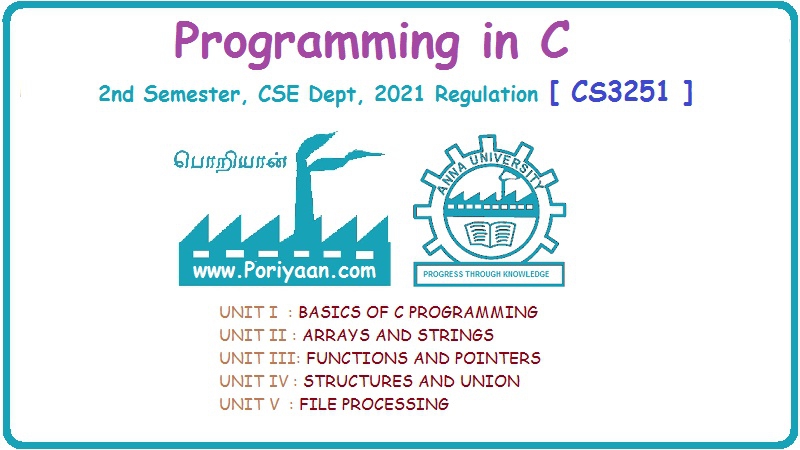Programming in C: Unit IV: Structures and Union
Unions Inside Structures
with Example C Program
You must be wondering, why do we need unions? Generally, unions can be very useful when declared inside a structure. Consider an example in which you want a field of a structure to contain a string or an integer, depending on what the user specifies.
UNIONS
INSIDE STRUCTURES
You
must be wondering, why do we need unions? Generally, unions can be very useful
when declared inside a structure. Consider an example in which you want a field
of a structure to contain a string or an integer, depending on what the user
specifies. The following code illustrates such a scenario.
#include <stdio.h>
struct student
{
union
{
char name [20];
int roll_no;
};
int marks;
};
int main()
{
struct student stud;
char choice;
printf("\n You can enter the
name or roll number of the student");
printf("\n Do you want to
enter the name (Y or N): ");
gets (choice);
if (choice=='y' || choice=='Y')
{
printf("\n Enter the name:
");
gets (stud.name);
}
else
{
printf("\n Enter the roll
number: ");
scanf("%d",
&stud.roll_no);
}
printf("\n Enter the marks:
");
scanf("%d",
&stud.marks);
if (choice=='y' || choice=='Y')
printf("\n Name: %s",
stud.name);
else
printf("\n Roll Number: %d
", stud. roll_no);
printf("\n Marks: %d",
stud.marks);
return 0;
}
Now
in this code, we have a union embedded within a structure. We know, the fields
of a union will share memory, so in the main program we ask the user which data
he/she would like to store and depending on his/her choice the appropriate
field is used.
Note
Pointing
to unions, passing unions to functions, and passing pointers to unions to
functions are all done in the same way as that of structures.
Programming in C: Unit IV: Structures and Union : Tag: : with Example C Program - Unions Inside Structures
Related Topics
Related Subjects
Programming in C
CS3251 2nd Semester CSE Dept 2021 | Regulation | 2nd Semester CSE Dept 2021 Regulation
